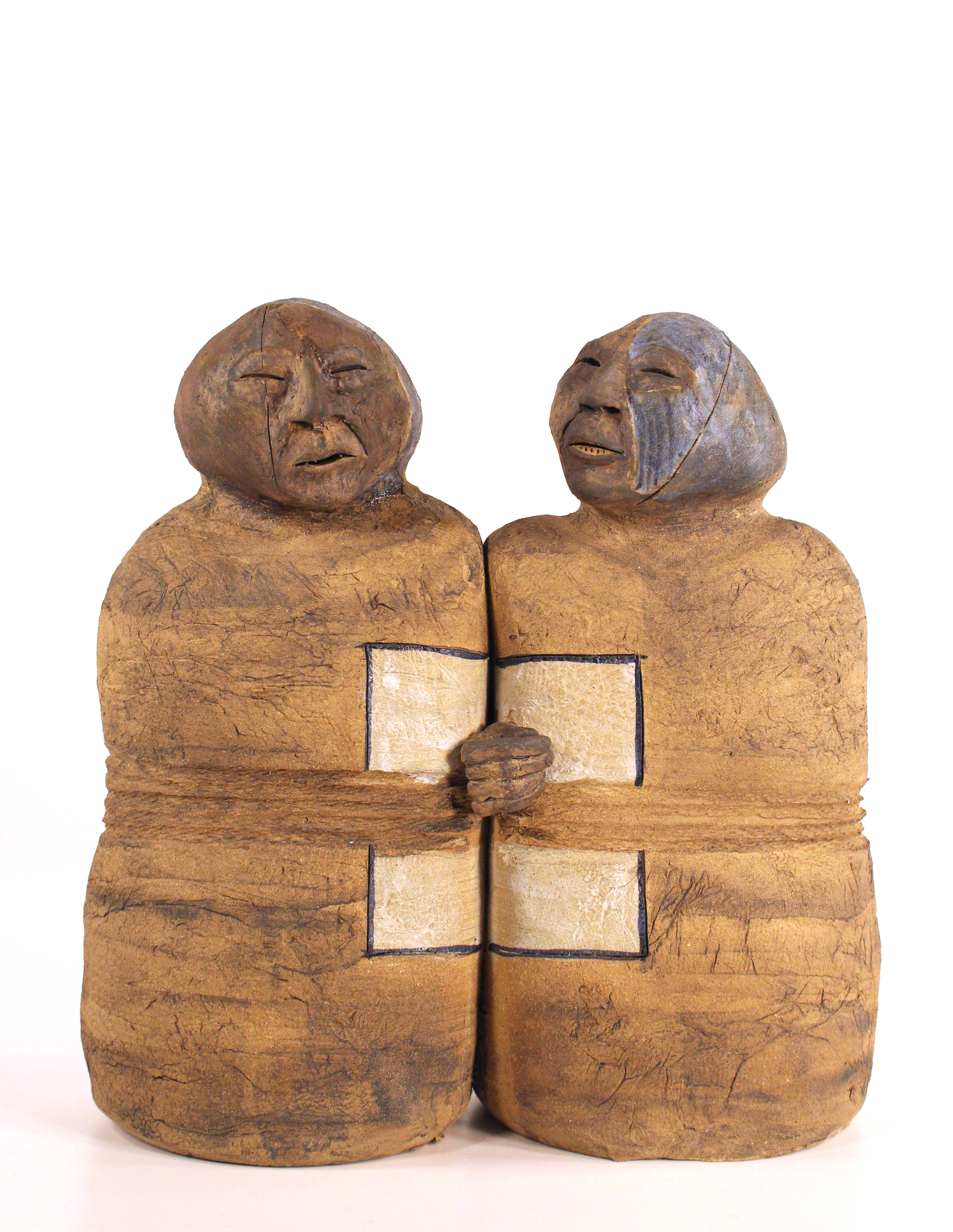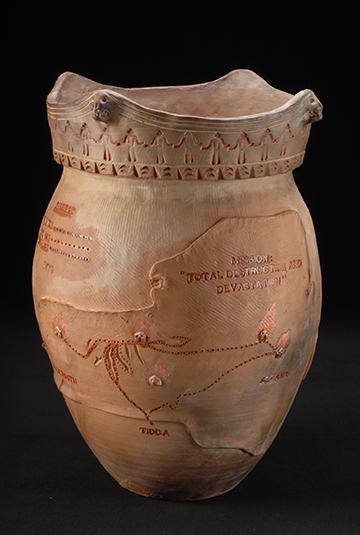August 24 – December 15, 2023
The Emily & Joe Lowe Galleries
Reflecting on his art in the 1970s, Peter Jones said, “My subject matter is usually about my people or of people who may affect my people.” Art, he continued, should not romanticize Indigenous people, or treat them as exotic, cultural oddities. True to these words, throughout his six decade career Jones has been a highly innovative artist whose work reflects Haudenosaunee cultural continuance, as well as challenges Haudenosaunee peoples have faced. His traditional and neo-traditional pots and his figurative sculptures draw from, revive, and communicate Haudenosaunee cultural knowledge and worldviews. His ceramics works also address genocide, dispossession, and oppression, as well as accentuate Indigenous resistance to settler colonial violence, both past and present.
Jones’s work is a testament to Haudenosaunee cultural continuity despite cataclysmic and overt challenges to Indigenous sovereignty owing to waves of colonialism, first by European powers and later by the United States and Canada. His traditional vessels revive ancient Haudenosaunee pottery techniques and styles, which were almost lost as Indigenous peoples adopted European trade goods and owing to profound disruptions by displacement, war, and epidemics. Many of Jones’s innovative figurative sculptures celebrate Haudenosaunee worldviews and social organization, while others address the negative impacts of missionary activities, Indian removal, assimilationist policies, and capitalism. In the face of these challenges, his sculptures of story tellers, wampum readers, medicine women, warriors, and elders, remind viewers that Haudenosaunee peoples have maintained their culture, which has persisted despite tremendous pressures and is still thriving today.
Under the direction of professors Sascha Scott and Scott Manning Stevens (Akwesasne Mohawk Nation), this exhibition was co-curated by students at Syracuse University, including Charlotte Dupree (Akwesasne Mohawk Nation), Eiza Capton (Cayuga Nation), Anthony V. Ornelaz (Diné), Ana Borja Armas (Quechua), and Jaden N. Dagenais.
The exhibition has been made possible by generous support from a Humanities New York Action Grant, a mini-grant from the Engaged Humanities Network, and Syracuse University SOURCE grants, as well as by co-sponsorship from the Humanities Center (Syracuse Symposium), College of Arts and Sciences, College of Visual and Performing Arts, Hendricks Chapel, Office of Diversity and Inclusion, Office of Multicultural Affairs, Department of Art and Music Histories, and the Native American and Indigenous Studies Program.
About the artist
Peter B. Jones was born an Onondaga citizen (Beaver Clan) in 1947 and grew up on the Cattaraugus Seneca Reservation in western New York, where he now operates a pottery workshop and studio. He studied under Hopi artist Otellie Loloma while attending the Institute of American Indian Art in New Mexico. His pottery, which has revived traditional Haudenosaunee pit firing, hand-built coiling, and slab construction, is admired and collected by community members, art collectors, and museums across the country and internationally. Reminiscent of early Haudenosaunee pottery, Jones’ art both speaks to cultural continuity and directly reflects the issues that have impacted Haudenosaunee people. Jones works mostly in stoneware and white earthenware clay. He is currently teaching young potters at the Seneca Nation Sully, building a traditional arts and Seneca language facility on the Cattaraugus reservation.
Related events:
Opening Reception: Continuity, Innovation, and Resistance: The Art of Peter B. Jones
September 14, 4:30 pm – 6:30 pm
Syracuse University Art Museum
Peter B. Jones Artist Talk
September 15, 12:30 pm – 1:30 pm
Syracuse University Art Museum
Community Day
October 14, noon – 4:00 pm
Syracuse University Art Museum
Art Break: A Conversation with the Curators of Continuity, Innovation, and Resistance
November 15, noon – 12:45 pm
Syracuse University Art Museum



